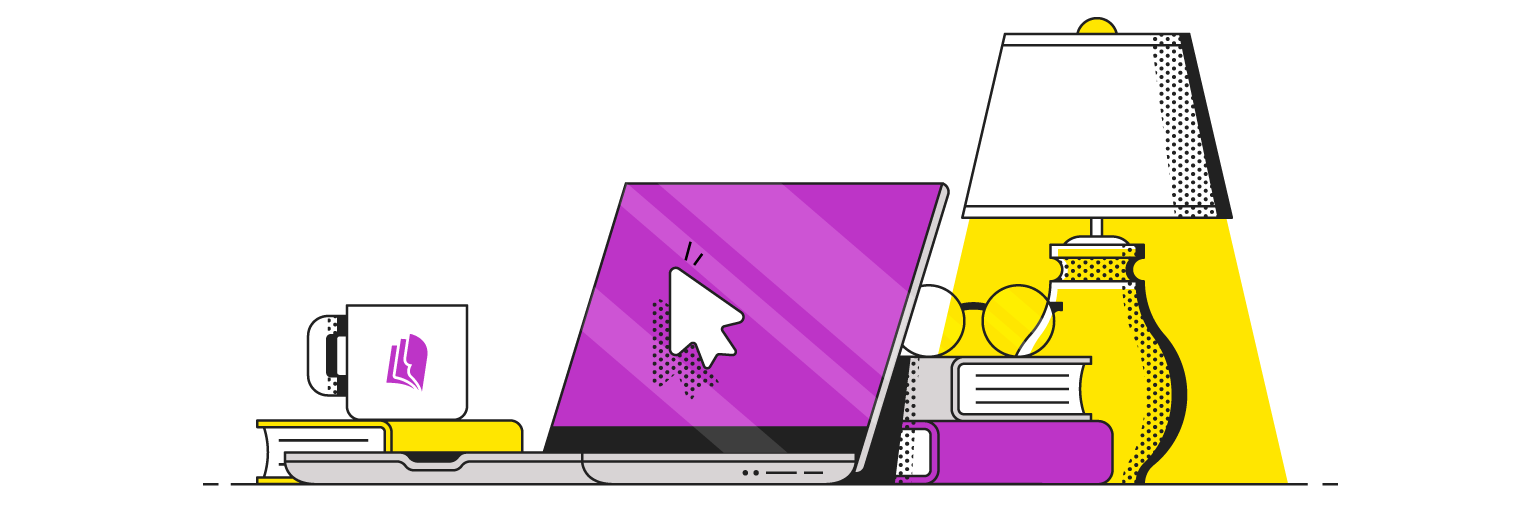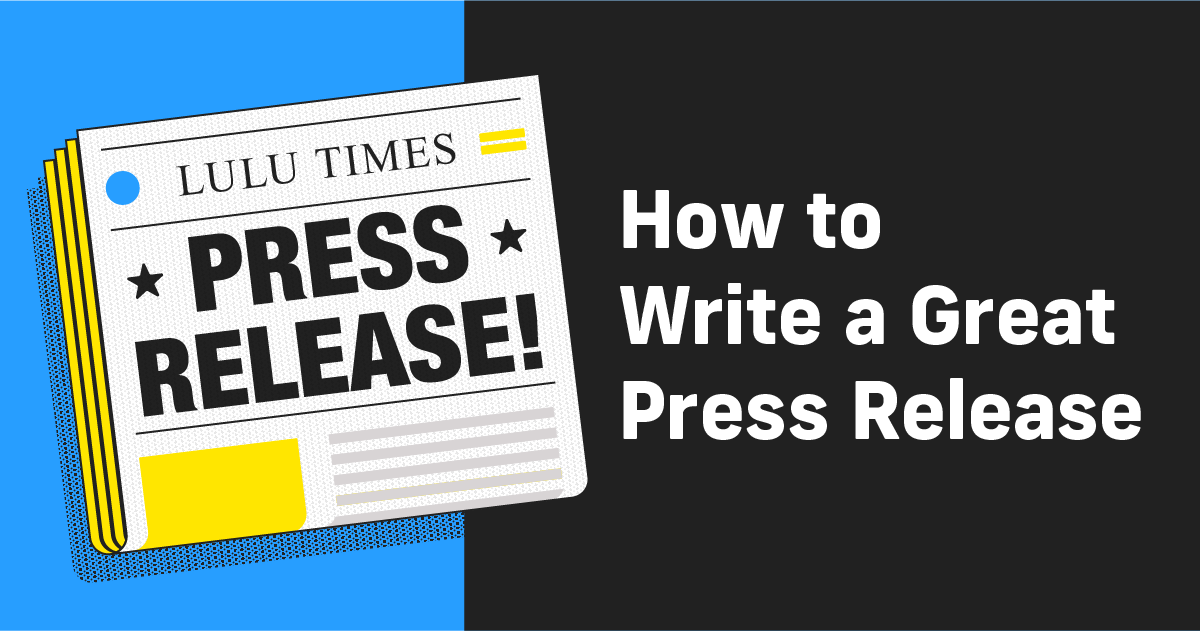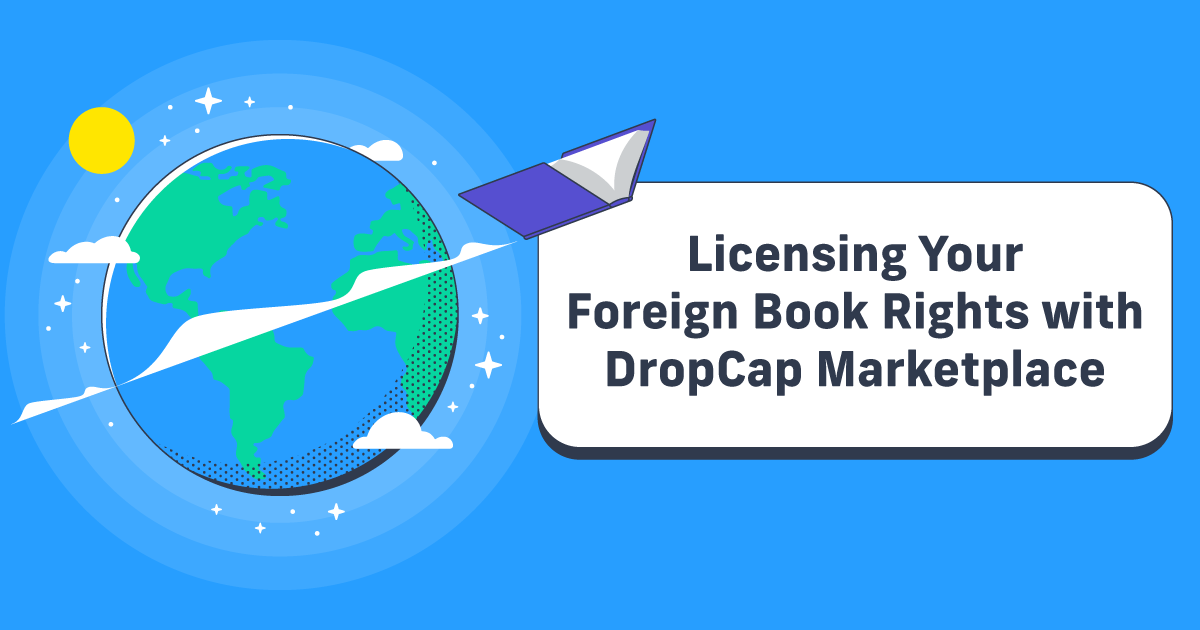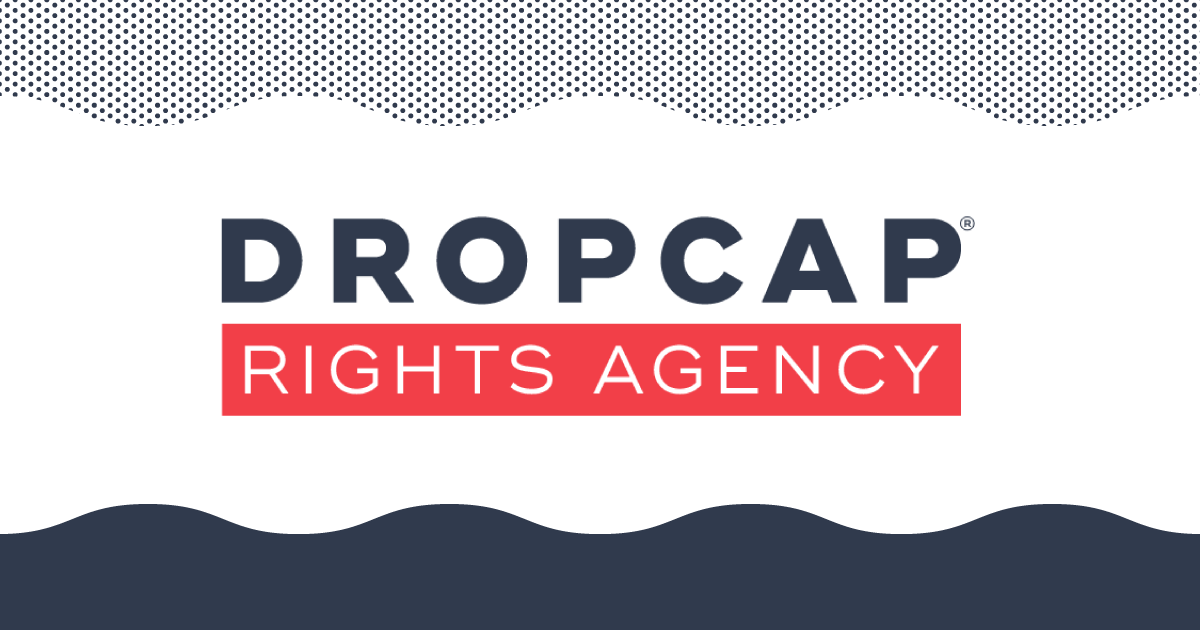How to Write a Great Press Release
–RALEIGH, NC – September 13, 2016 – Lulu, the pioneer and world leader in independent publishing, announced today that all authors should launch their new books with a well-crafted press release. “It’s your story and you should be the person telling it,” said Glenn@Lulu, Content Marketing Manager at Lulu Press.
That’s a standard (and frankly boring) opening for a press release: Announce something, follow it with an authoritative, quotable quote, and then tell the story. It’s like writing a one-page essay. All you need to do is write a release that answers who, what, when, where, why, and how. Sounds simple doesn’t it?
It may surprise you to learn there are people out there who make hundreds of dollars per press release. That’s right, all that money for writing five paragraphs announcing something someone thinks is newsworthy. In reality, this is something you can do yourself. All you need is a bit of practice and an ear for what will attract the attention of local, national, and global news outlets.
One Second to Fame
We publish books every day. Another one being published is not news. Therefore, your headline has to jump off the screen and make a reporter want to read more of your story. Since your headline is the first impression you will make, avoid clichés, puns, and gimmicky subject lines. Otherwise, your headline may be the last impression you make before a journalist hits the delete key.
Sell the Hook, Not the Book
What makes your book relevant? Does it solve a problem? How does it relate to other books in the genre? Does your book explain or fit neatly into a current news story? Does the action in your book revolve around an upcoming holiday? Are you a coroner writing a crime novel? A mother writing a conspiracy thriller? A life-long city dweller celebrating life off the grid? Your press release is the means to tell your story. The book is almost an afterthought, “If you want to know more, you can find <insert title here> on Lulu and all major online bookstores.”
Don’t Promote, Inform
We base an effective press release on facts, not an opinion. Of course, you, your mom, and your best friend think your book is the best book ever published, but that is only an opinion. A journalist needs facts and when possible quotes. If your book solves a problem, state the problem and the solution it provides. If your characters or plot coincide with something happening in the news, explain why your book will help people better understand the situation. When possible, provide quotes from experts in your field or snippets from reputable reviewers.
The Best Book in the World—Really?
You want your headline and body text to be original, snappy, and attention-grabbing; however, avoid using clichés and hyperbole. Unless you have proof your book will transform lives, and leave readers breathless or on their knees begging for more, don’t include these overused tropes in your press release. They show a lack of thought and imagination (see above—facts not opinions).
Remember, the press release is an informational tool. You’re promoting yourself and your book, but leave the marketing speak for a social media post.

Your Free Lulu Account
Create a Lulu Account today to print and publish your book for readers all around the world
Do Your Research
Your best bet for getting early publicity for your book will be from local newspapers, libraries, radio programs, and independent bookstores. With that said, make sure you do your homework and address your press release email to a person (name spelled correctly). No one wants to receive a generic email blast sent to every Sir, Madame, or Whom it May Concern in the business. Make it personal. I spell my name Glenn with two Ns – you should too!
Everybody Is Busy (and Lazy)
All journalists are on tight deadlines, so the easier you make it for them to write the story, the more likely it is your story will get their attention. When you send your press release email, include links to your author press kit (About the Author), your book’s retail page, and book excerpts. I do not recommend it you send a free copy of your book with the initial contact. Instead, explain that free electronic copies will be provided upon request.
Follow these tips and you will be well on your way to getting the publicity your book deserves. Remember, start local, be personal, and try different angles until you have perfected your press release. Then go national.
You wrote a book! Yay for you! Take a moment and celebrate the accomplishment. Savor the giddy happiness of creating something from just an idea (and months and months of toil). Take a few moments to appreciate this feeling. You deserve it.
Enough Celebrating
Now get back to work. First, buy a few copies to sign for family and close friends. Also, share your great news on Facebook, Twitter, and all the places your friends hang out. If you are like many newly published authors, you will stop here and devote the coming weeks to hoping someone will stumble upon your book among all the books available to purchase online.
It could happen, but to be honest, without a savvy media campaign it is unlikely. I hear you gnashing your teeth and wailing, “Nobody has money for that!” I get it, really I do, but come on, you just wrote a book. You can surely write a one-page press release about it.
Remember those five-paragraph essays you wrote in high school and college? Writing a press release is pretty much the same thing and like those high school essays, they follow a standard format. Let’s get started.

Create Your Book
Use Lulu's free templates to easily create and publish your book today.
FOR IMMEDIATE RELEASE (all caps – you can also enter a future release date here)
Press Release Title (bold font, up to 80 characters, should be catchy, not cutesy!)
Write a three-sentence summary of your news angle or book pitch here. Your angle makes your book special. Your pitch is how you generate interest in your book.
CITY, STATE – DATE (all caps, bold font) – The body of your press release starts here, on the same line as your dateline. An effective release will be written around the pitch idea you’ve perfected for your book. The first paragraph briefly answers the questions of who, what, when, where, why, and how.
Use the body paragraphs to expand on the five Ws and an H above. Why is your book timely or relevant? Who will care? What problem does it solve? How will people benefit from reading it?
The writing style for your press release should imitate a news story or book review you would find in the publications to which you are submitting your release. This approach makes it easier for journalists in search of content to see your news as something ready for publication through their outlets.
It is always good to incorporate quotes from the author, an authority in the field, or a reputable reviewer, throughout the body of your release. Keep in mind that quotes cannot be changed if they pick your press release up by a journalist, so choose them carefully. Include the names and credentials of the people you quote. DO NOT quote family or friends unless they are an expert in the field in which you write.
Add any remaining details such as the release date, where the book can be purchased (Lulu.com), the formats in which it is available, the retail price, etc.
About <Your Name>
Include a short author bio ( approximately 100 words). Include your qualifications to write the book – i.e. local connection, profession, life-long interest, etc. We refer to this paragraph as a boilerplate and usually remains the same from one press release to another.
For more information about <YOUR BOOK TITLE>, visit <Link to WEBSITE>. Additional author information and promotional images are available at <Link to AUTHOR PRESS KIT> or contact <PUBLICIST’S NAME> at <PHONE NUMBER>. Free review copies are provided on request.
###
(Indicates the end of the press release)
Experts Agree
Experts recommend a press release be about one page, so use your words wisely. Most importantly, your press release will be the first impression you make on a journalist, editor, or reviewer so proofread, proofread, and proofread again before you send it.
When complete, copy and paste your attention-grabbing headline into the email subject line. Then copy the entire press release (including the headline) into the body of the email. Include links to your website and author press kit.
Be sure to include your contact information. Do not attach files to the email or include a free electronic copy of your book unless requested by a journalist.
For authors seeking that elusive “best-seller” status, self-promotion can be your best tool for generating internet traffic and increasing book sales.
Of all the self-promotion options available to independent authors, distributing press releases is probably the most overlooked and affordable method. This is unfortunate because it can be highly effective – especially if your press release is picked up by a major news outlet, journal, or magazine. It could even launch you to stardom.
With all of this said, you are just wasting your time if only launch a press release into the deep space of the internet and hope someone notices. It’s up to you to make sure people are aware it’s out there. So, put it to work on your author platform and start getting some of that sweet, sweet internet love.
Search Engine Optimization (SEO)
SEO is a technical term for getting the most from what you put out on the internet. The technicalities are for the engineers to understand. For us, let’s think of it as executing a social media blitz, which sounds much more glamorous.
You may think this is complicated, but it’s easier than you think. First, post the news on your website, then link to it from everywhere. The more backlinks that point to your press release, the more value search engines assign to it. This means you show up higher on the search results page.
Embedded iFrame
Here’s What to Do:
- Tweet your news with a link to the announcement on your website (and have friends and family retweet it)
- Post your news with a link to the announcement on Facebook, Twitter, Pinterest, Google+ (very important for SEO), and everywhere else we may find your audience.
- Create and post a video on YouTube, with you talking about the announcement and link back to the press release.
- Embed the YouTube video into a blog post and linked back to the announcement pages on other social networks such as Reddit, Digg, and StumbleUpon.
The combined effect of this promotion will be a four to five times increase in interest and traffic to your site – thanks to the improved search engine rankings of your press release and author news.
As an independently published author, it’s up to you to get the word out about your work. If you lay the groundwork ahead of time, you will be ready for the attention. As a reminder, when your press release gets picked up by a local, state, or national publication, launch a new social media blitz announcing the announcement.




